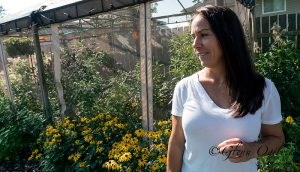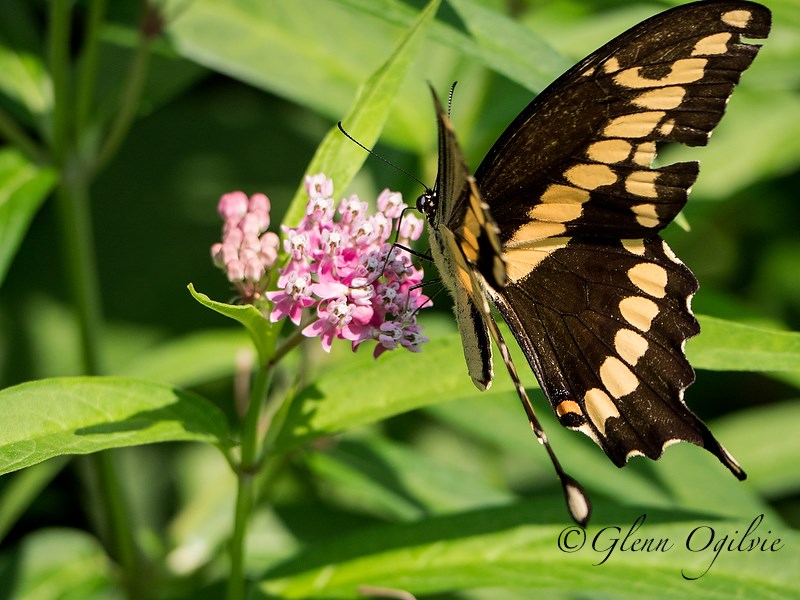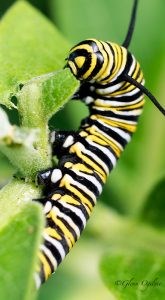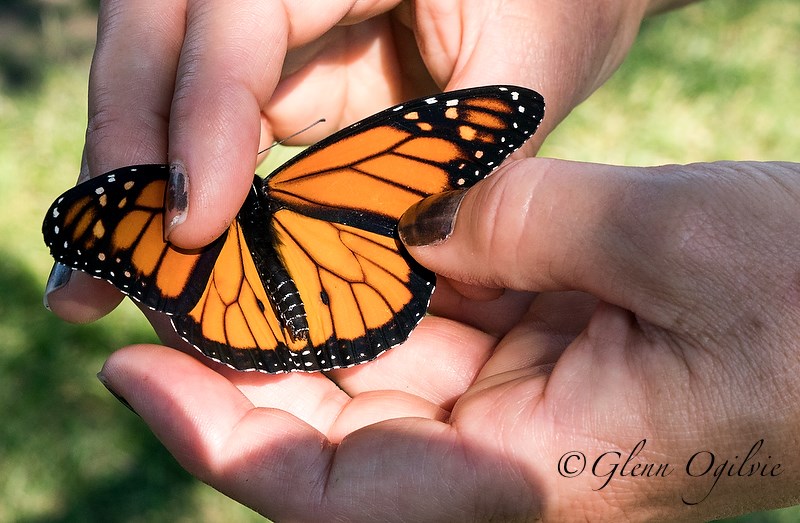George Mathewson
“See the black spots,” says Rose Tanner, holding a monarch butterfly gently between two fingers.
“That’s a male.”
Identity confirmed, it dances away from her hand, rises above the backyard of her Sarnia home and rejoins the free insect world once more.

For the past 18 years Tanner has been raising butterflies, mostly monarchs but also black swallowtails, red admirals and cabbage whites.
“I just love them, and I’ve always loved them since I was a girl,” she says. “Some people have computers. I have bugs.”
As hobbies go, butteries are a relatively easy and inexpensive one, requiring only a garden of flowers and some containers to rear caterpillars.
But Tanner has taken it one step further, building a “flight house” from a pair of outdoor dining tents in which she brings butterflies together to breed.
“This is where I let them do their thing,” she says, unzipping the doorway in. “They usually mate in the late afternoon.”
After a day or two, the adults are released and the laid eggs gathered for rearing.

To attract them, Tanner and husband Tim have planted 30 species of flowers especially beloved by butterflies, including milkweed, zinnias, coneflowers and Joe-Pye weed.
The National Wildlife Federation has certified their pesticide-free yard as wildlife habitat, and on this day it’s abuzz with bees, birds and grasshoppers.
Tanner’s sanctuary boosts the monarch’s natural survival rate from 10% to more than 95%. So far this year she has raised and released more than 100 and she averages 300 to 500 releases a year.
Monarch butterflies are known for the improbable migration they make to Mexico each winter, a journey of up to 4,800 kilometres (3,000 miles) made by a delicate insect the weight of a paperclip.

Giving such remarkable creatures a helping hand is a rewarding experience, said Tanner, a nurse at St. Joseph’s Hospice.
She discovered the hobby almost by accident one day when her daughter, then a toddler, appeared with a black swallowtail in hand and asked what it was.
“I didn’t know. I couldn’t tell her so I looked it up and it took off from there,” she says.
“I became passionate about doing all that I could to help them survive.”
